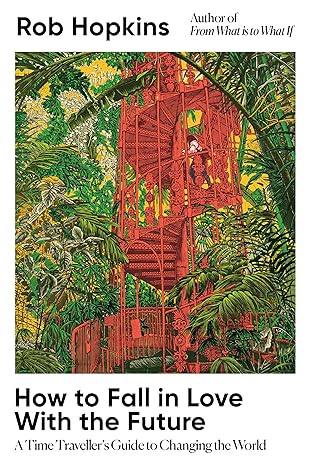How to Fall in Love with the Future

In the midst of rising fascism, never-ending climate disaster and seas of doom and pessimism, How to Fall in Love with the Future is the kind of book all of us should be aspiring to write. Rob Hopkins deliberately leaves aside everything that’s wrong (which he only briefly touches upon in the Afterword) and invites the reader on a delightful journey through his experience facilitating time travel to a 2030 where we have won, building on his extensive experience facilitating workshops and interviewing people who are embodying the change we want to see.
The book both seeks to convince the reader that (re)imagining the future is the way, and to give them the right tools to do this in their own communities, while providing a long list of examples along the way.
The many case studies and the practical advice make the book both a repository of hope, and a toolset for change (with Hopkins calling for readers to join his future building efforts), but while reading how the impossible was actually just something not yet done is encouraging, for me, the highlight of the book were the broader reflections on how imagining the future and remembering the past are closer together than it seems (ch2), the need to mobilise longing as a tool to drive change (ch3) and the multiple ways in which time can be understood beyond Newton’s idea that all time flows equally (ch8).
I am a little bit more in love with the future than I was before the read.